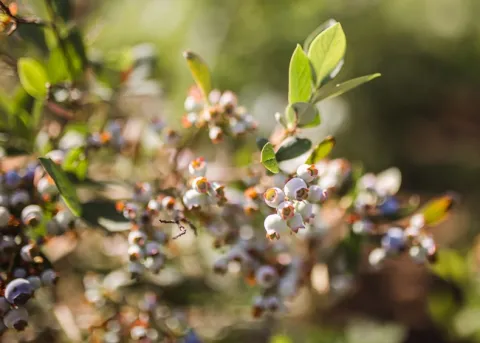June days are the longest of the year - take advantage of the extra hours in your garden.
Tasks
- Check drip irrigation lines and emitters for leaks or clogs and adjust to provide adequate moisture.
- Thin fruit on stone and pome fruit trees.
- Spider mites can be discouraged by rinsing dust from foliage.
- Stake tall, weak-stemmed flowers.

- Cut spent canes to the ground after harvesting berries. Attach new canes to the trellis for next year's crop.
- Prune azaleas, camellias, and hydrangeas after bloom.
Fertilizing
- Reduce or eliminate fertilizer for landscape trees and shrubs, unless used to remedy nutrient deficiencies.
- Do not feed plants if they are water stressed.
Planting
- Limit planting during hot weather, as newly installed plants require frequent irrigation while root systems become established.
Enjoy now
- Annuals and perennials: Lily-of-the-Nile (Agapanthus), aster, fibrous begonia (Begonia semperflorens), Coneflowers (Rudbeckia).
- Bulbs, corms, tubers: giant allium (Allium), canna.
- Trees, shrubs, vines: abelia, desert willow (Chilopsis linearis), flowering maple (Abutilon).
- Fruits and vegetables: fuji apple, apricot, beans, eggplant.
Things to ponder
- Adjust lawn mower setting to cut lawn higher. Set mower to 2½ to 3 inches for tall fescue, ¾ inches to 1 inch for common bermuda, and ½ to ¾ inches for hybrid bermuda.
- Use less toxic insecticidal products such as insecticidal soaps or neem oil.
- Annuals such as pansies, petunias, and snapdragons are best planted in pots where they can provide a splash of color by an entrance rather than planted in beds where they will need more water.


